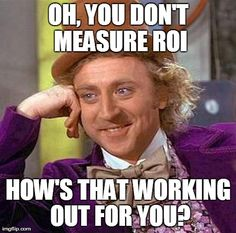Whether you’re an aspiring SDR or a newly promoted account executive, ask yourself: what differentiates success from mediocrity?
Successful account executives aren’t selling a product — They’re selling a story. The prospect isn't asking you,
"Sell me this pen."
Instead he or she is asking you,
"Tell me why I should care about this pen and how it solves my particular problem."
It goes without saying that this should already be answered proactively in your sales call pitch and for that, you should be prepared well in advance.
Follow these 6 ways to successfully structure your next sales calls.
Ways to Structure The Sales Call Pitch
1. Define Your Expectations

The number one thing you have to do when setting out towards any goal is to define your expectations. Everyone wants to make it. But this begs the question of how you recognize ‘making it’. What quantifies making it in a sales demo? Does being successful mean reiterating your spiel verbatim or does it mean knowing that your audience has fully understood your vision?
By defining your expectations, you eliminate the extraneous noise from your message. And suddenly, your vision gains focus.
You’ll find that defining your expectations allows you to structure your sales call pitch in a way that tells a story — all outstanding products have a compelling story that connects data and technology with the client’s needs. Strong narratives influence buyer’s decisions. A story with defined expectations is concise and necessary, especially tailored towards its audience.
2. Listen, You Can't Anticipate Everything!
When your an AE it's not about memorizing a dialogue, Every prospect comes in with different pain points. You have to personalize the sales call script. In order to personalize you need to listen for their needs.
You need to work towards your end goal of coming off as genuine and personable.
This entire process begins with knowing your prospect and target persona. At the end of the day you're always selling to people. You have to make them care and be succinct at translating features into benefits that is relevant to their use case.
3: Understand the Ins and Outs of Your Product (and your client)

More than half of buyers want to know how a product works in the first call. A successful account executive emphasizes mastery over your sales demo as opposed to familiarity.
It’s imperative that you are an expert on your product — Your sales demo is effective if you can provide information to supplement what is found in a brochure or website.
Simultaneously, it is crucial to dig into your client’s business and understand it from the inside out. You will be unable to provide value to your client without fully understanding their needs.
4: Connect Your Demo Back to the ROI

Your sales demo needs to prove ROI to your client.
This goes back to the initial point of defining your expectations, and truly understanding the core concern of the issue. An effective salesperson can sell more value when they are perceived as a problem solver.
Do your homework so you can determine benefits that are quantifiable — provide metrics for your client!
By identifying every aspect of your client’s challenges, you can attain concrete solutions that connect back to the ROI and enable you to get the sell.
5: Orient Your Demo Based on Information Gathered in the Discovery Call

Discovery calls are crucial in understanding the details of a client’s needs.
Good discovery questions will help account executives take a deeper dive and develop solutions to their client’s needs. Qualifying questions provide an opportunity while building the sales call pitch to demonstrate feasibility for your client to implement your product/solution.
Once you have finished the discovery call and are delineating the next steps, tie in the value proposition based on the information you gathered in the discovery call.
6: Leave time to address the audience

Every successful sales demo is receptive to its audience.
While you are defining your expectations and acting like a Hollywood actor, dedicate time to proactively anticipating your audience. Contemplate what is standing between you and them.
Your prospect may dubiously question you and your product because of its cost or potential to disrupt established business practices. Further consider your customer’s timeline and decision-making process. You won’t be able to grasp these factors unless you hone in on them from the get go.
During the sales demo itself, read your audience. Look for signposts that demonstrate areas you need to highlight during your Q&A. Then, act on these factors.
Most importantly, don’t leave questions as an afterthought — Always set aside time for your audience to clarify any aspect of your demo and have answers prepared. Be prepared to schedule a follow-up call and confirm the details before you leave, to transform your client’s decision to buy.
In short,
1: Define Your Expectations
2: Listen, Learn, and Personalize
3: Understand the Ins and Outs of Your Product (and your client)
4: Connect your demo back to the ROI
5: Orient your demo based on information gathered in the discovery call
6: Leave time to address the audience
The bottom line is this: Your prospects want you to narrate a story for their needs not sell them your product.








